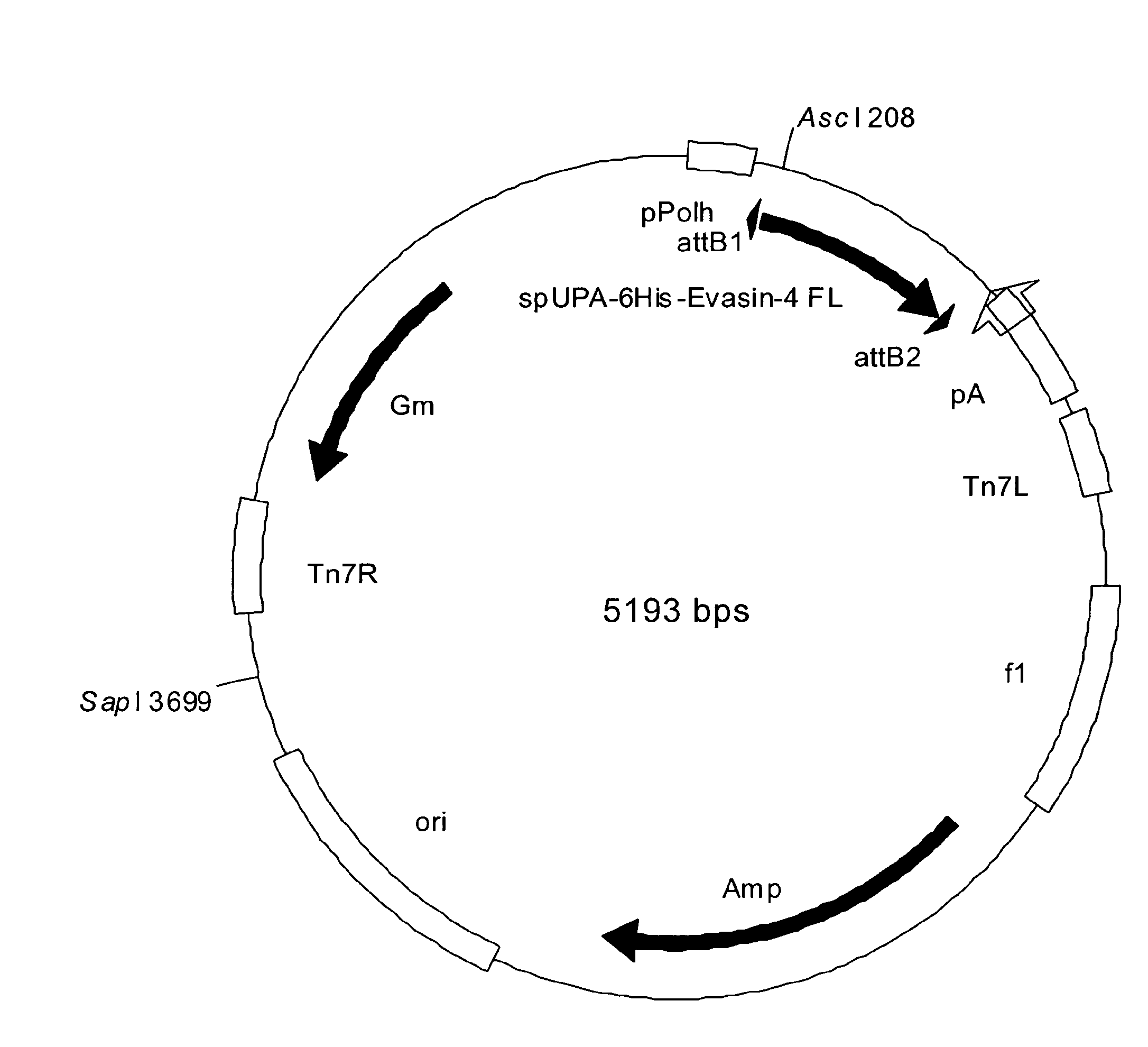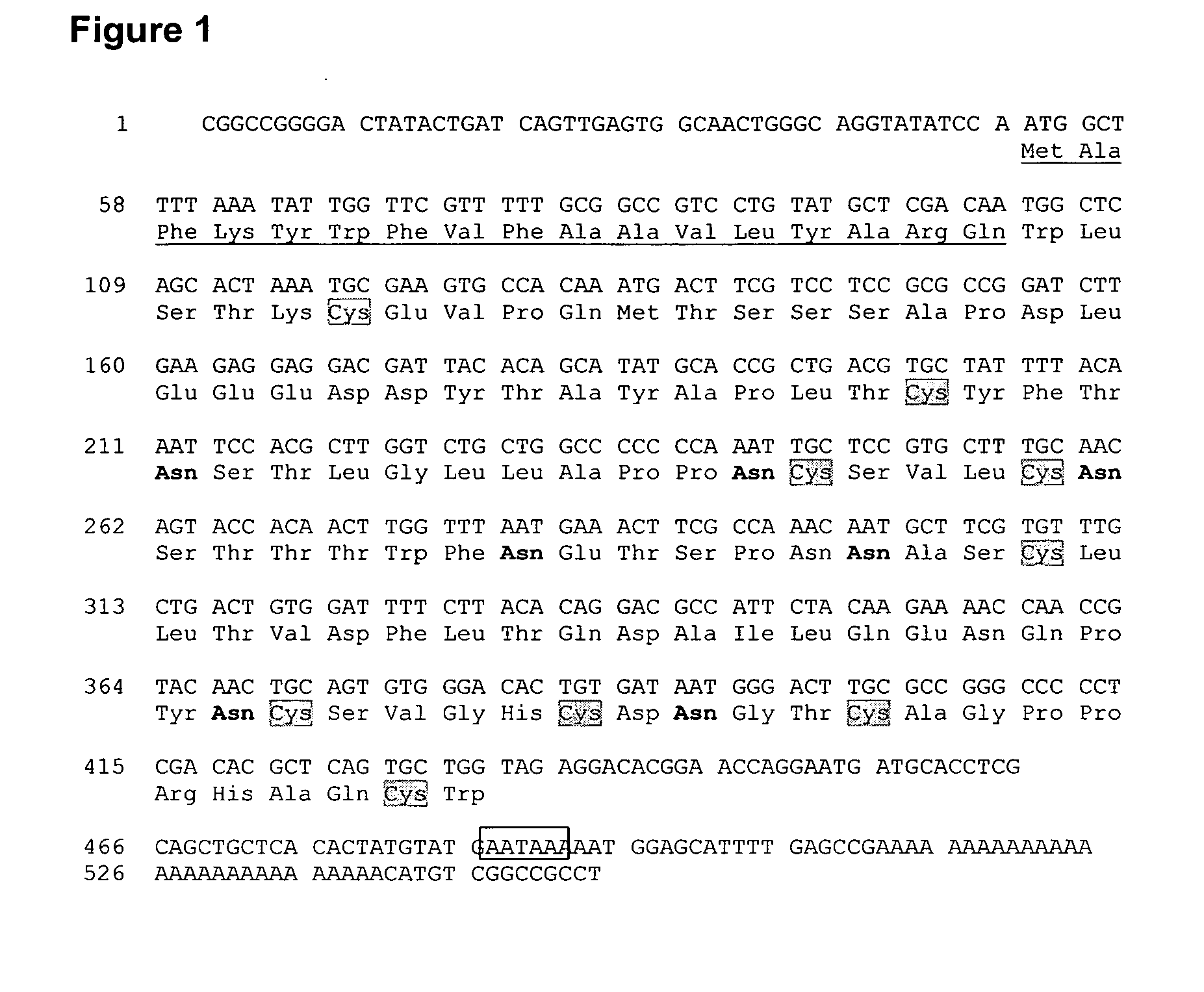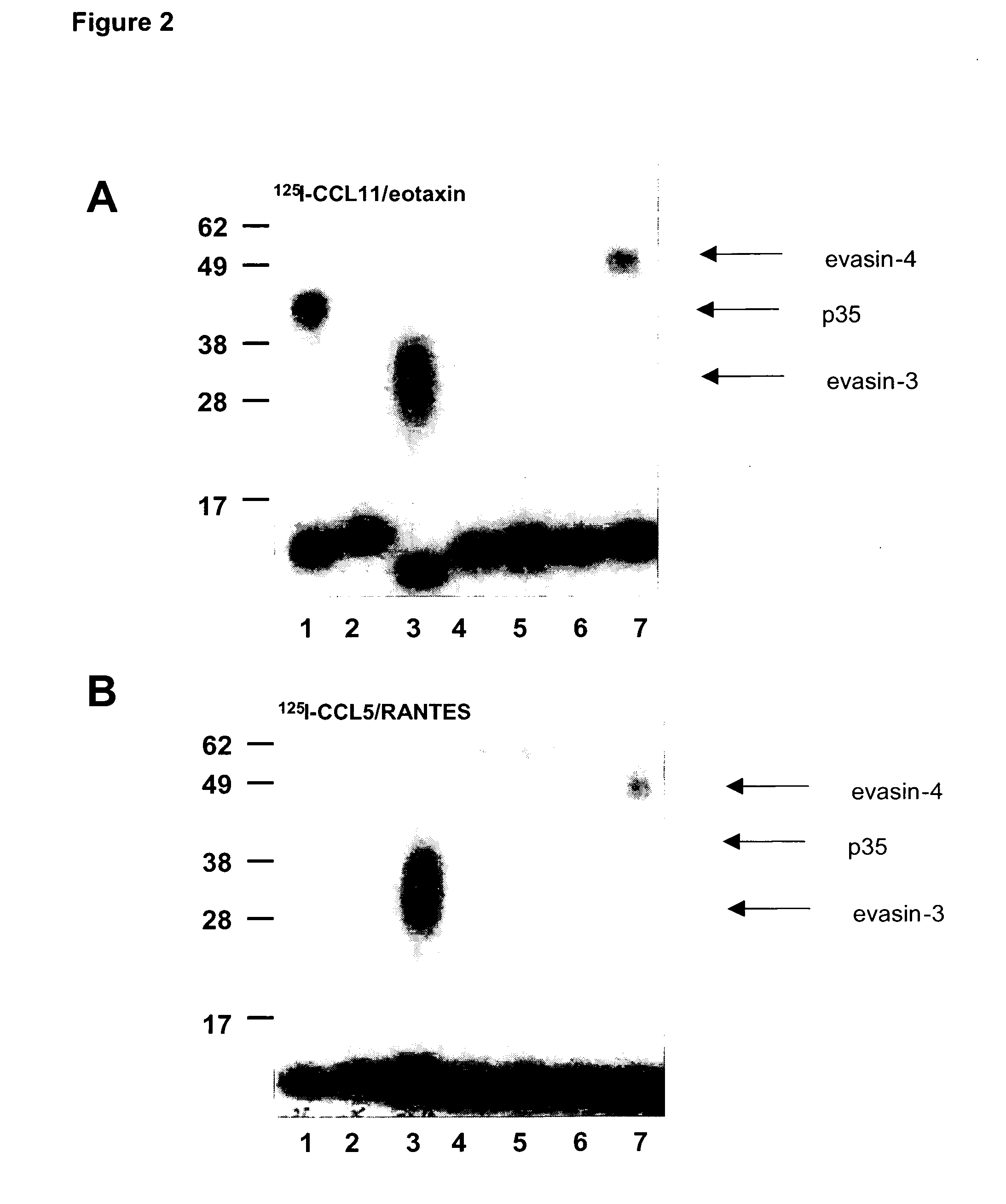Novel Cc-Chemokine Antagonists
a technology of cc-chemokine and antagonists, which is applied in the field of new cc-chemokine antagonists, can solve the problems of large majority of sequences that have not been characterized, and achieve the effect of inhibiting their activity
- Summary
- Abstract
- Description
- Claims
- Application Information
AI Technical Summary
Benefits of technology
Problems solved by technology
Method used
Image
Examples
example 1
Screening of the Rhipicephalus sanguineus cDNA Library for CC-Chemokine Binding Activities and Cloning of Evasin-4
Materials and Methods
[0184]a. Construction of the Rhipicephalus sanguineus cDNA Library and of the Control Plasmid Expressing Evasin-3
[0185]Salivary glands were harvested from 100 adult ticks (Rhipicephalus sanguineus) and were immediately stored in ice-cold RNAlater™ solution (Ambion) until further use. Total RNA was extracted using the TRIzol™ method (Invitrogen) according to the manufacturer's instructions. The cDNA library was constructed in the phagemid vector λTriplEX2 using the SMART cDNA library construction kit (Clontech). The cDNAs were size-fractionated with a ChromaSpin 400 column (Clontech) according to the manufacturer's instructions before ligation to the vector. The size of the cloned cDNA inserts in the library ranged from about 0.6 kb to 1.5 kb and the frequency of inserts was approximately 80%.
[0186]The cDNA inserts from the Rhipicephalus sanguineus sa...
example 2
Purification of a Truncated, 6HIS Tagged Version of Evasin-4 (Δ6 Evasin-4) from the Culture Supernatants of Transfected HEK293 EBNA Cells
Materials and Methods
[0197]a. Subcloning of Δ6 Evasin-4 cDNA with a 6 Histidine (6His) Tag at the N Terminus into Expression Vectors pDEST8 and pEAK12d using the Gateway™ Cloning Process
[0198]The full length amino acid sequence of evasin-4 contains a predicted 17 amino acid signal peptide which is theoretically cleaved to produce a mature protein of 110 amino acids. In order to produce recombinant evasin-4 for biochemical characterization, a cDNA construct was generated by a series of PCR reactions in which the signal peptide of uPA (SEQ ID NO: 7) was fused to a five amino acid flexible linker sequence (GSPNS) followed by a 6 histidine tag sequence, separated from the sequence encoding amino acids 24-127 of full length evasin-4 by a second flexible linker (GSPNS) and caspase 8 cleavage site (LETD). The signal peptide of UPA flanked at the 3′ end by...
example 3
Characterization of Recombinant Δ6 Evasin-4 Inhibitory Activity on CC-Chemokines In Vitro and In Vivo
Materials and Methods
[0211]a. Receptor Binding Assay.
[0212]An equilibrium competition receptor binding assay was used to determine the inhibitory properties of recombinant Δ6 evasin-4 on the chemokine / chemokine receptor interaction. The binding experiments were performed using membranes prepared from CHO (Chinese hamster ovary cells) transfectants stably expressing the human CCR1 or CCR5 (CHO / CCR1 or CHO / CCR5). Recombinant Δ6 evasin-4, purified from HEK293 cells, was suspended at 0.1 mg / ml in 50 mM Tris / HCl pH 7.5 buffer containing 1 mM CaCl2, 5 mM MgCl2 and 0.5% BSA and eleven serial, 4-fold dilutions were prepared in a 96 well plate (F96 certified maxisort immunoplate, NUNC). Wheatgerm scintillation proximity assay beads (Amersham) stored at 50 mg / ml in 1×PBS at 4° C. were diluted to 10 mg / ml in the medium described above and membranes were diluted to 80 μg / ml in the same medium. 2...
PUM
| Property | Measurement | Unit |
|---|---|---|
| pH | aaaaa | aaaaa |
| molecular weight | aaaaa | aaaaa |
| pH | aaaaa | aaaaa |
Abstract
Description
Claims
Application Information
 Login to View More
Login to View More - R&D
- Intellectual Property
- Life Sciences
- Materials
- Tech Scout
- Unparalleled Data Quality
- Higher Quality Content
- 60% Fewer Hallucinations
Browse by: Latest US Patents, China's latest patents, Technical Efficacy Thesaurus, Application Domain, Technology Topic, Popular Technical Reports.
© 2025 PatSnap. All rights reserved.Legal|Privacy policy|Modern Slavery Act Transparency Statement|Sitemap|About US| Contact US: help@patsnap.com



